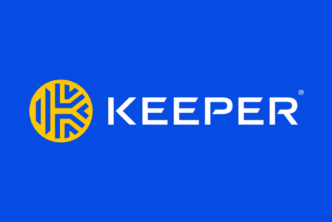Building a remote team can be a cost-effective way of developing, and as COVID-19 is keeping more employees out of the office than ever now is a great time to transition your team to remote work. However, out of the sight of team leaders and managers, productivity can become an issue. Tracking your team’s productivity entails a careful balance between monitoring without becoming overbearing – let’s take a look at how to build trust, encourage collaboration, and track your team’s productivity.
Table of Contents
Productivity Tracking Tools
Finding the right project management tools for your development team is essential both for the productivity of your team as well as tracking their productivity. Whilst tools like Microsoft Teams and Zoom enable seamless communication and collaboration, tools for tracking productivity need to work in the background, enabling team management on a broader level.
Did you know that daily time tracking could decrease productivity leaks in your remote team by up to 80%? What’s more is, if time is tracked daily, this is around 66% accurate, while if it is tracked weekly, this is merely 47% accurate.
“Time tracking tools such as Time Doctor or Toggl Track can provide managers with an overview of how employees spend their workday as well as providing real-time information about mouse movement,” says Sue Emmer, an HR expert at Draft Beyond and Researchpapersuk. “This provides team leaders with hyper-specific data about where there’s slack in the system.”
Don’t Spy On Them
If project managers feel that productivity is dipping in their remote workers, it can become tempting to implement monitoring tools that spy on their developers. Team leaders may want an objective look at how developers are using their time – mouse tracking tools and screenshots will give a clear insight into a developer’s workday. However, spying on your employees is likely to damage productivity – it breaks down the trust that’s essential to remote teams functioning as team members rather than individuals.
In fact, 72% of employees in a survey said that monitoring software neither increased nor decreased their productivity, so monitoring software is often just a waste of money.
Do Build Mutual Trust
Rather than spying on your remote workers, building trust can help with productivity tracking as well as with productivity. Timesheets are a great tool that encourages remote developers to record and report on their own productivity, for example. When employees work with their managers in a supportive environment, and managers are open and approachable, members of your development team can flag any issues with their workflow before it becomes a bigger problem in productivity.
Did you know that 95% of US workers are happy to track their time by themselves, manually? What’s more, is, they say that they are more accurate if they do this.
Think Of The Big Picture
When implementing processes that track employee productivity it’s important to discourage team leaders from getting petty or micromanaging every moment of their team’s working day. If employees dip into social media for ten minutes here or there or find themselves sidetracked by mobile apps, managers should accept this rather than making a problem out of it. Nobody engaged in remote work can be productive at all times and sometimes these diversions can help to refresh workers when they’re feeling drained.
Get The Team Involved In The Measurement Process
Having an open and transparent tracking process is a key part of building trust and responsibility, core values to the functionality of an effective team. When choosing KPIs (key performance indicators) by which to measure the productivity of your remote workforce, consult your developers on what they think best represents their productivity.
“Choosing the right metrics means that you’re collecting accurate data and when your developers are involved in this process it makes an intervention in productivity a conflict-free task,” says Denise Tucker, a leadership blogger at Writinity and Last Minute Writing. “If you’re working in small teams productivity tracking can be an ongoing conversation.”
Productivity is a collaborative effort and your team will be more motivated if they can see everyone working hard, even across time zones. Using shared documents on Google Drive or coding through GitHub can provide transparency to everyone’s working practices and encourage productivity and self-policing.
Put Your Data To Good Use
Whilst employee monitoring software can provide enormous amounts of data it’s important for managers not to put the cart before the horse and start collecting data they aren’t going to use. If managers don’t have the time to sift through data that’s been collected, the monitoring process is defunct and can actually be a drain on productivity in your development team.
Conducting a periodic review of how you evaluate staff productivity is important for streamlining employee productivity. Bring the team on board for this process to discuss performance as well as the methodology used for tracking it – KPIs and metrics should be reassessed using input from your developers.
An effective KPI has simplicity, aligns with your company goals, is relevant, measurable, achievable, timely, and visible.
Time’s Up
Employee monitoring is essential when you’re dealing with remote developers but understanding the harm that tracking tools can do is essential before they’re implemented. Collaboration and trust are essential to functioning teams – building your productivity tracking goals around these core values will let you get the best out of your team.





